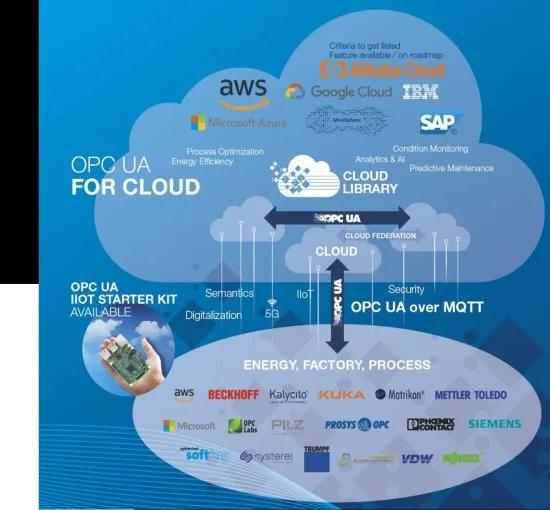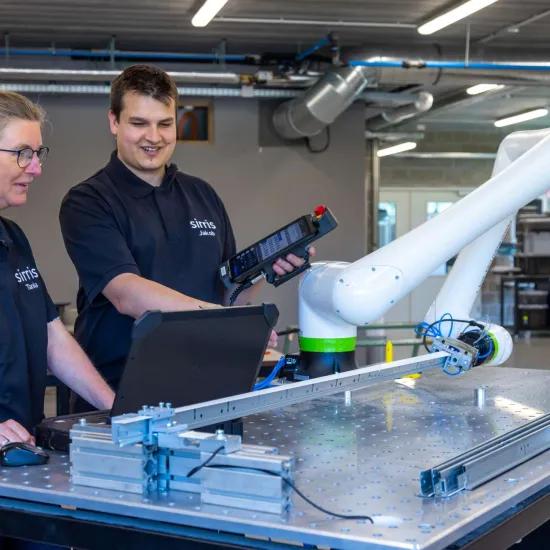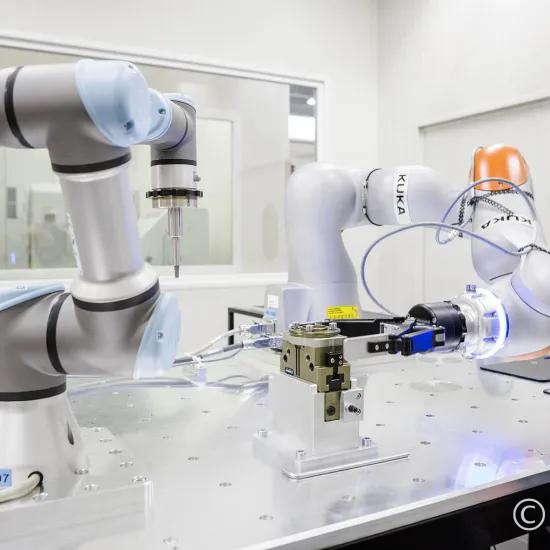In connected industry, there are two prominent major standards: OPC-UA and Omlox. OPC-UA is a communication protocol for the Industrial Internet of Things (IIoT). Omlox is an open standard for real-time location. Together they support interoperability, security and flexibility in industrial environments. In this article, Olivier Gramaccia, SMART Products & Services expert at Sirris, explains how the OPC-UA and Omlox standards facilitate the transition of your manufacturing company to Industry 4.0.
OPC-UA: the key to a connected factory
The OPC-UA (Open Platform Communications Unified Architecture) protocol is an industrial communication standard. It allows machines, equipment and IT systems to be connected in a unified ecosystem. “Over the years, OPC-UA has become a key component of the Industrial Internet of Things (IIoT). This protocol is essential today in the most extensive IoT environments,” notes Olivier Gramaccia, SMART Products & Services expert at Sirris.
1. Increased interoperability of systems
“One of the major current trends with regard to the OPC-UA protocol is interoperability, that is, the ability to connect heterogenous systems,” explains Olivier Gramaccia. For example, OPC-UA is compatible with other industrial standards such as MQTT (Message Queuing Telemetry Transport) and REST API. This compatibility facilitates communication between systems of different generations and various manufacturers. Industrial processes thus become simpler to optimise.
2. Focus on security and upgradeability
Security is central to the development of OPC-UA. The protocol incorporates advanced mechanisms such as data encryption, authentication and access control to guarantee protection of the information exchanged. According to Olivier Gramaccia, the proliferation of Edge and Cloud architectures make this protection even more important.
3. OPC-UA for Industry 4.0
OPC-UA is often considered a key facilitator of Industry 4.0. It facilitates exchange of data in real time among machines, equipment, and applications. At the same time, OPC-UA also ensures convergence between information technologies (IT) and operational technologies (OT). Thanks to this development, smart factories capable of adapting to production needs in real time can be created.
4. Openness to the Cloud
Recently the OPC Foundation launched the OPC Foundation Cloud Initiative, which is supported by giants like Amazon, Microsoft, Alibaba, SAP and Huawei. “This initiative aims to create complete interoperability between IT and OT by proposing a unified standard applicable to the entire industrial production line,” explains Olivier Gramaccia.
Omlox, the open standard for real-time location
Omlox is an innovative standard dedicated to real-time location (RTLS - Real-Time Location System) in industrial environments. It standardises object tracking technologies like Ultra Wide Band (UWB), GPS or Wi-Fi. “Omlox is distinguished by its open, modular approach, allowing broader and more flexible adoption of the location solutions,” explains Olivier Gramaccia.
1. Standardisation of RTLS systems
Historically, real-time location systems have been fragmented between various suppliers. “Omlox resolves this problem by proposing a common basis so that these systems function together harmoniously,” explains Olivier Gramaccia. “This standardisation reduces dependence on a supplier and allows better integration of location technologies within factories,” he continues.
2. The increasing adoption of UWB
Among location technologies, Ultra Wide Band (UWB) stands out for its precision and low energy consumption. Omlox promotes adoption of this technology while offering compatibility with other systems. Olivier Gramaccia confirms this; UWB is especially useful for real-time tracking of objects and equipment in complex industrial environments.
3. Close integration with Industry 4.0
Like the OPC-UA protocol, Omlox plays a crucial role in Industry 4.0. Omlox precisely locates objects and equipment in production processes. This optimises key aspects such as logistics, stock management and workflows. “Thanks to its open approach, Omlox is easily integrated with Industry 4.0 systems such as ERP (Enterprise Resource Planning) or data analytics platforms,” Olivier Gramaccia stresses.
OPC-UA and Omlox, pillars of connected industry
In summary, OPC-UA and Omlox represent two major advances for connected industry. The OPC-UA protocol guarantees interoperability and security in complex industrial systems, while Omlox standardises and improves real-time location. Together, these two standards facilitate the transition to smart, flexible and connected factories, true symbols of Industry 4.0.
Ready to make the leap to connected industry?
Do you want to digitalise your factory and make it more connected? Or understand how the OPC-UA and Omlox standards can improve your production? At Sirris, we support you in adopting these standards to digitalise your processes, improve your performance and make a successful transition to Industry 4.0
Contact us to find out more and accelerate your transformation!






